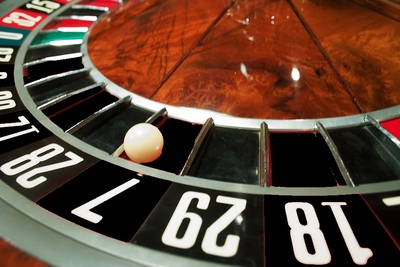 People are always looking for ways to find an edge with roulette, despite the fact that it is a totally balanced game with a set house edge that cannot be ‘beaten’.
People are always looking for ways to find an edge with roulette, despite the fact that it is a totally balanced game with a set house edge that cannot be ‘beaten’.
However, that doesn’t mean that understanding and learning about the odds and probabilities of the various different bet types is a waste of time.
Understanding the game allows players to make sensible decisions that are not influenced by psychological biases, and means you can also employ any staking strategy you may be using without diverting to something else based on perceived ‘patterns’ or a hunch.
This article is going to focus on the even money bets, and will refer mainly to red and black, but the information will also be true to the other 1:1 bets such as odd or even, and high or low (1-18 and 19-36).
If you are interested in the probabilities of single number bets, then have a look at this article as well.
We will also apply everything to European roulette rather than any other variation as that is the most common version of the game played in the UK. Obviously though, if you played American Roulette for example then the odds would change.
Understanding the Probabilities
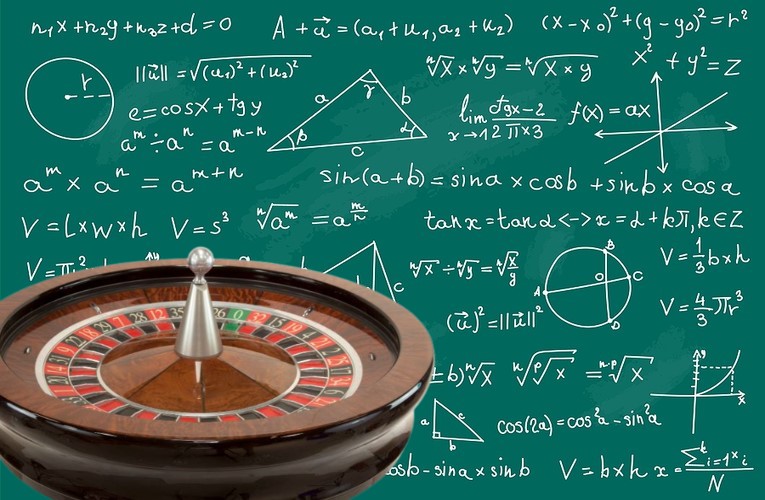
Before we start with the numbers, it’s important to understand one thing in particular.
- Long term probabilities do not influence the outcome of any single spin.
The chances of hitting a red or a black on any one spin is the same, regardless of what has happened previously. Each spin is mutually exclusive.
The ball could have landed on red 100 times in a row, but that doesn’t make black any more likely to come up on the next spin because the outcome of that spin is not influenced by the outcome of the last.
That said, the probability of 100 reds coming up in a row is insanely low as have never been recorded as happening, but that doesn’t mean that it couldn’t.
The game doesn’t know it has just spun however many reds or blacks in a row, it has no memory, so any sort of long term probabilities we look at are totally dependent on the factors we choose to include in the equation.
The probabilities that should really matter are those of each individual spin.
We can work out the probability for anything; how many blacks in 100 spins, how many blacks between one zero and the next, how many times red 7 comes up directly after a black has been spun, etc.
We set the parameters, and while it’s interesting, it’s not really useful to our betting. To think it is would be to fall foul of gambler’s fallacy; the incorrect belief that a random event is more or less likely to occur based on the result of a previous random event.
If you have ever found yourself thinking something along the lines of “a red must be due soon” or “Surely it can’t be black again, I’ll bet on red”, then you have experienced gambler’s fallacy.
The game doesn’t start when you join the table, the wheel doesn’t know how many times it has been spun that day or even what the results have been.
With that hopefully understood, we can safely move on to looking at some probabilities.
Odds of Red or Black Coming up in Roulette
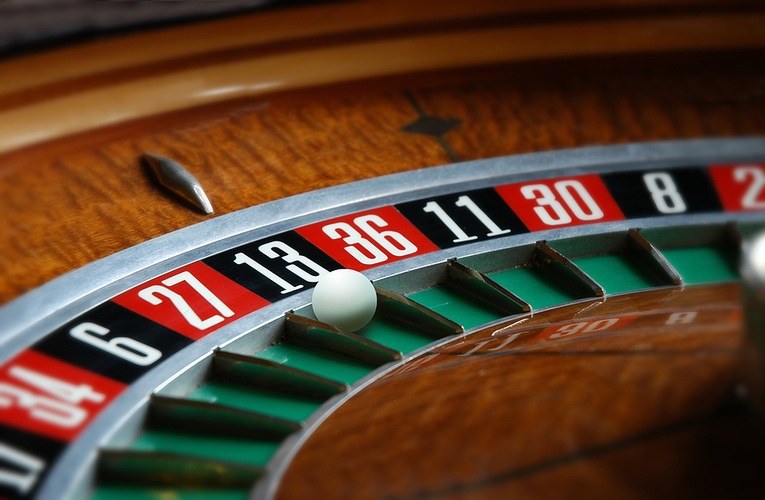
This first bit is nice and simple.
Taken in isolation, the odds of red or black coming up on any single spin are around 48.65%. So not quite 50/50 because of course, we have the green zero to contend with.
To find the percentage chance we just divide 18 by 37:
- 18 ÷ 37 = 0.4865
There are 18 reds and 18 black, plus the zero, making 37 numbers all in all. So it doesn’t take a genius to work out that you have an 18 in 37 chance of red or black coming up, and that can be broken down to about 1 in 2.06.
As explained, these odds do not change from one spin to another.
To look at it from a different angle; the odds of any particular number coming up are 1 in 37, or very slightly over 2.70% – incidentally, this reflects the chances of the ball landing on zero.
But since there are 18 numbers which are red/black, we must multiply that percentage by 18:
- 18 x 2.70 = 48.6
So working out the odds or probability of red or black coming up once is nice and easy, but what about several of them coming up in a row?
Odds of Consecutive Reds or Blacks in Roulette
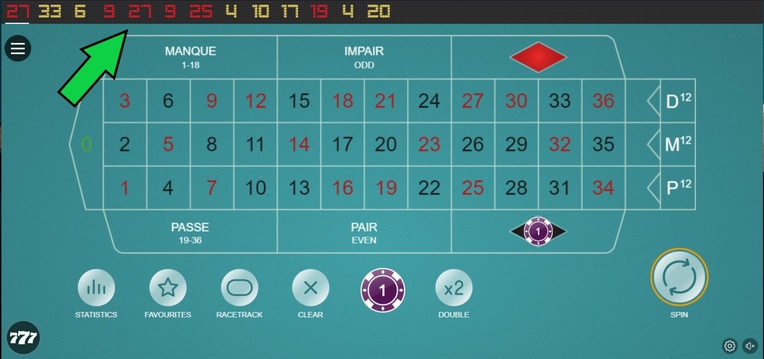
This is where we need to switch our maths brains on a bit, but only a little bit.
We can work out the odds of any number of consecutive reds or blacks simply by multiplying that number by the odds of a single spin coming up with red or black.
We know that this is 18 in 37, so we can do a few fairly simple calculations to get the probability for any number of spins we like.
There are two useful ways of looking at it.
First, we need to divide 18 by 37, and then multiply it as many times as necessary to cover the number of spins we want to know about.
The long way to do this would be:
- 18 ÷ 37 x 18 ÷ 37 x 18 ÷ 37 x 18 ÷ 37…
…and so on.
This would give us our percentage chance.
We can also express it more concisely though, by using a second option:
- 06^2 (or 3 or 4 etc.)
This ^ symbol means ‘to the power of’ and will basically multiply by any number of spins you like.
2.06 to the power of two would show the chances of getting two colours in a row, to the power of three would show the chances of three colours in a row, and so on.
The table below shows the odds of a consecutive colour for 1-10 spins:
| Spins | Probability | % Chance |
|---|---|---|
| 1 | 1 in 2.06 | 48.54% |
| 2 | 1 in 4.24 | 23.59% |
| 3 | 1 in 8.74 | 11.51% |
| 4 | 1 in 18.00 | 5.60% |
| 5 | 1 in 37.09 | 2.72% |
| 6 | 1 in 76.41 | 1.32% |
| 7 | 1 in 157.42 | 0.64% |
| 8 | 1 in 324.29 | 0.31% |
| 9 | 1 in 668.04 | 0.15% |
| 10 | 1 in 1376.17 | 0.074% |
If you go much further the odds get pretty wild, but that doesn’t mean it never happens.
There have been a few very famous recorded examples of the ball landing on the same colour as many as 26 times in a row for black, way back in 1913 and the Casino Monte Carlo. Player’s displayed epic levels of gambler’s fallacy that night, assuming red must be ‘due’ because so many blacks had come in, and betting higher and higher amounts the more assured they became. The casino made a fortune.
This is nothing compared to the 32 reds that spun in a row in 1943 though. Apparently. It happened in America but other details on this one are scarce, so perhaps it should be taken with a pinch of salt. It’s certainly possible though, albeit with a staggering probability of 1 in 10,321,314,387!
Probabilities of Red or Black in American Roulette
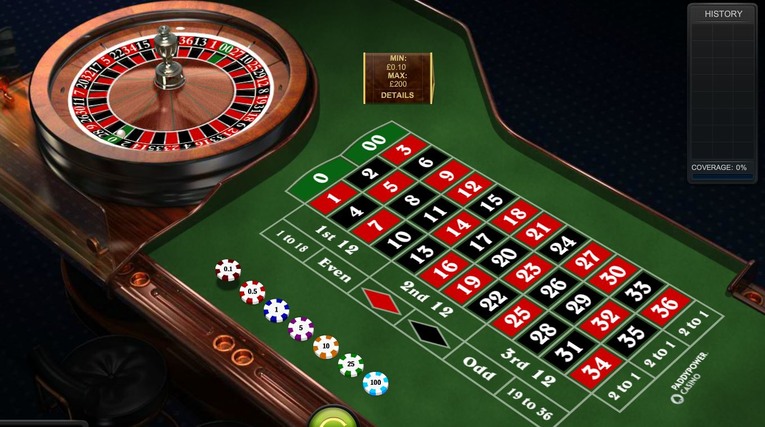
To finish, we will give you a quick chart of the same set of odds but for American roulette.
The same method applies here, the only difference is you are working with a total of 38 numbers instead of 37 because of the extra double zero space on the wheel.
Remember, this gives the casino double the edge so stick to European roulette where possible.
| Spins | Probability | % Chance |
|---|---|---|
| 1 | 1 in 2.11 | 47.36% |
| 2 | 1 in 4.45 | 22.43% |
| 3 | 1 in 9.39 | 10.62% |
| 4 | 1 in 9.82 | 5.03% |
| 5 | 1 in 41.82 | 2.38% |
| 6 | 1 in 88.24 | 1.12% |
| 7 | 1 in 186.19 | 0.53% |
| 8 | 1 in 392.87 | 0.25% |
| 9 | 1 in 828.97 | 0.12% |
| 10 | 1 in 1749.13 | 0.056% |
So as expected, the probabilities of colour streaks are lower than with European roulette.
